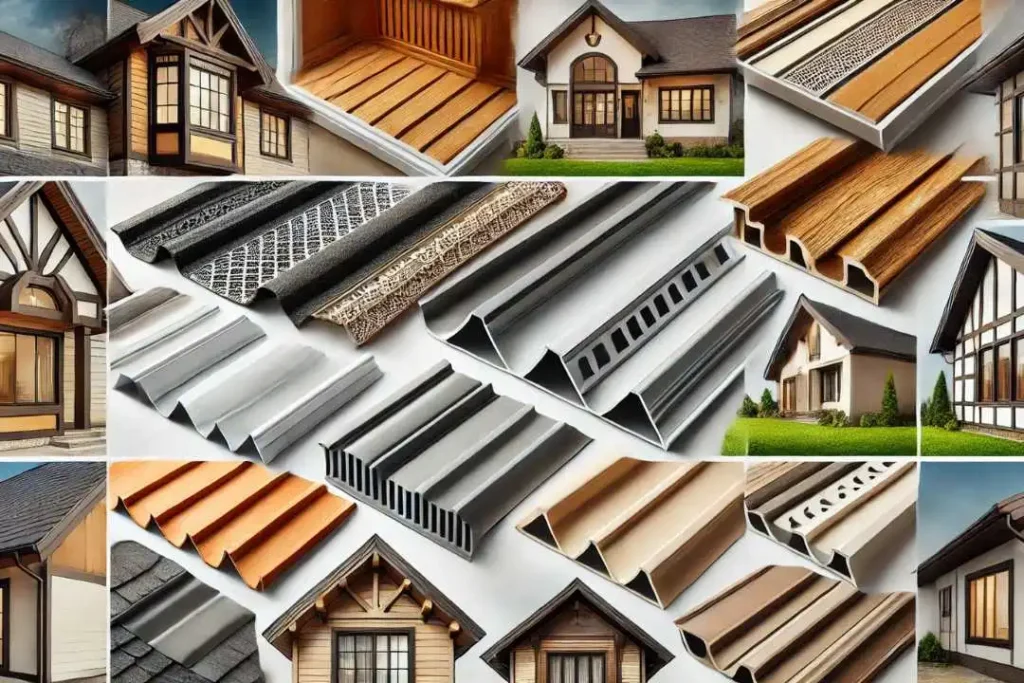Introduction
In architecture and home construction, soffits are a fundamental component that significantly influences the overall appearance and functionality of a building. Despite their often overlooked presence, soffits perform crucial roles ranging from providing ventilation to enhancing aesthetic appeal. This comprehensive guide explores the various aspects of soffits, including their definition, importance, types, materials, installation, and maintenance, to provide a thorough understanding of this vital architectural element.
What is a Soffit?
The word “soffit” comes from the French term “soffite,” meaning “something fixed underneath.” In architectural terminology, a soffit refers to the underside of any construction element, such as the overhang of a roof, a balcony, or an archway. The most common use of soffits is found under the eaves of a roof, where they cover the exposed rafters, contributing both to the building’s structural integrity and its aesthetic appeal.
Benefits of Soffits

Ventilation
One of the primary functions of a soffit is to facilitate proper ventilation within a building’s attic space. Properly ventilated soffits allow fresh air to enter the attic, which helps regulate temperature and moisture levels. This ventilation is crucial in preventing issues such as mold, mildew, and ice dam formation during colder months. By maintaining a balanced attic environment, soffits contribute to the overall health of the roof and the home.
Aesthetic Appeal
Soffits play a significant role in enhancing the visual appeal of a building. They provide a finished look by covering the exposed rafters and other structural elements, giving the roofline a clean and polished appearance. The choice of material and design for soffits can complement the architectural style of the building, adding to its curb appeal.
Protection
By covering the underside of the roof overhang, soffits protect the rafters and joists from exposure to the elements. This protection is vital in preventing water damage, which can lead to rot and deterioration of the structural components. Soffits also act as a barrier against pests, such as birds, insects, and rodents, which might otherwise find their way into the attic or roof space.
Energy Efficiency
Soffits contribute to the energy efficiency of a building by promoting proper attic ventilation. A well-ventilated attic helps maintain a consistent temperature, reducing the load on heating and cooling systems. This can lead to significant energy savings and a more comfortable living environment throughout the year.
Types of Soffits
There are several types of soffits available, each suited to different architectural needs and preferences. Understanding the different types can help in selecting the most appropriate option for a specific building.
Continuous Soffit
Continuous soffits run along the entire length of the eaves, providing uniform ventilation and a cohesive appearance. This type of soffit is ideal for larger roof areas, as it ensures consistent airflow throughout the attic space. Continuous soffits are often made from materials like vinyl or aluminum, which offer durability and ease of maintenance.
Individual Soffit Panels
Individual soffit panels are separate pieces installed between the rafters. This type offers flexibility in terms of design and installation, as individual panels can be replaced if damaged without affecting the entire soffit system. Individual panels are available in various materials, including wood, vinyl, and fiber cement, allowing for customization to match the building’s style.
Vented Soffit
Vented soffits are specifically designed to facilitate airflow into the attic. They have perforations or slots that allow air to circulate while keeping pests out. Vented soffits are essential for maintaining proper ventilation, particularly in climates with high humidity or extreme temperature fluctuations. They are available in various materials, such as aluminum, vinyl, and fiber cement.
Non-Vented Soffit
Non-vented soffits are used primarily for decorative purposes and do not provide ventilation. They are suitable for areas where attic ventilation is not required, such as under covered porches or overhangs that do not lead to the attic. Non-vented soffits are available in a range of materials and finishes, offering flexibility in design choices.
Materials Used for Soffits
The choice of material for soffits is crucial, as it affects both the functionality and appearance of the building. Various materials are used for soffits, each with its own advantages and considerations.
Aluminum
Aluminum is a popular choice for siding due to its lightweight, durability, and resistance to rust and corrosion. Aluminum soffits are available in a variety of colors and finishes, making them versatile for different architectural styles. They are also low-maintenance, requiring minimal upkeep to retain their appearance and functionality.
Vinyl
Vinyl sidings are another common option, known for their affordability and low maintenance. Vinyl is resistant to moisture, making it an ideal choice for areas with high humidity or frequent rainfall. Vinyl soffits come in a wide range of colors and styles, including options that mimic the appearance of wood, providing a cost-effective alternative with similar aesthetic appeal.
Wood
Wood soffits offer a traditional and aesthetically pleasing option, adding a classic touch to buildings. However, wood requires regular maintenance, including painting or staining, to prevent rot, insect damage, and weathering. Despite the maintenance requirements, wood soffits are prized for their natural beauty and ability to complement various architectural styles.
Fiber Cement
Fiber cement soffits combine the benefits of wood and cement, offering durability, fire resistance, and minimal maintenance. They are resistant to moisture, pests, and extreme weather conditions, making them a long-lasting option. Fiber cement soffits can be painted in various colors, allowing for customization to match the building’s design.
Composite Materials
Composite soffits are made from a blend of wood fibers and plastic, offering the appearance of wood with the durability and low maintenance of plastic. They are resistant to rot, insects, and weathering, making them a practical and attractive choice for soffits. Composite soffits are available in various colors and finishes, providing flexibility in design.
Installation of Soffits
Proper installation of soffits is crucial to ensuring their functionality and longevity. The installation process varies depending on the type of soffit and the material used, but certain general steps are common to most soffit installations.
Preparation
Before installing soffits, it is essential to prepare the area by ensuring that the roof and eaves are structurally sound and free from damage. Any necessary repairs should be completed before proceeding with the soffit installation. It is also important to measure the area accurately to determine the amount of material required.
Cutting the Soffit Panels
Soffit panels should be cut to the appropriate size, allowing for a slight gap at the ends to accommodate expansion and contraction due to temperature changes. Cutting should be done using tools suitable for the specific material, such as a saw for wood or a utility knife for vinyl.
Installing the Soffit Panels
The installation process typically begins at one end of the eaves and progresses to the other. Panels are secured in place using nails or screws, with care taken to ensure that they are aligned correctly and provide a consistent appearance. For vented soffits, it is important to ensure that the ventilation openings are not obstructed.
Securing the Soffit
Once the panels are installed, they should be secured firmly to prevent movement or displacement. This may involve additional nailing or screwing, as well as checking that all panels are securely fastened to the structure.
Finishing Touches
After the soffit panels are installed and secured, any necessary finishing touches, such as painting or caulking, can be completed. This helps to enhance the appearance of the soffits and provides additional protection against the elements.
Maintenance of Soffits
Regular maintenance is essential to ensure the longevity and performance of soffits. The maintenance requirements vary depending on the material used, but certain general practices are recommended for all types of soffits.
Cleaning
Soffits should be cleaned periodically to remove dirt, debris, and any buildup that may obstruct ventilation. Cleaning can be done using a soft brush, mild detergent, and water. For vinyl and aluminum soffits, a pressure washer can be used, taking care not to damage the material.
Inspecting for Damage
Regular inspections are important to identify any damage, such as cracks, holes, or rot, that may compromise the integrity of the soffits. Any damaged areas should be repaired promptly to prevent further deterioration and potential issues with ventilation or structural integrity.
Repainting or Restaining
For wood soffits, regular repainting or restaining is necessary to protect the wood from moisture, UV rays, and pests. This helps to maintain the appearance and durability of the soffits. Other materials, such as fiber cement and composite, may also require periodic repainting to maintain their appearance.
Checking Ventilation
For vented soffits, it is important to ensure that the ventilation openings remain clear and unobstructed. This helps to maintain proper airflow and prevent issues such as mold or ice dam formation. Regular cleaning and inspection can help to keep the ventilation system functioning effectively.
Do contact with us for any queries, services or business ideas.
Conclusion
Soffits are a vital component of a building’s architecture, serving multiple functions that contribute to the overall functionality, aesthetics, and energy efficiency of a structure. From providing essential ventilation to protecting structural elements and enhancing curb appeal, soffits play a crucial role in both residential and commercial buildings.



